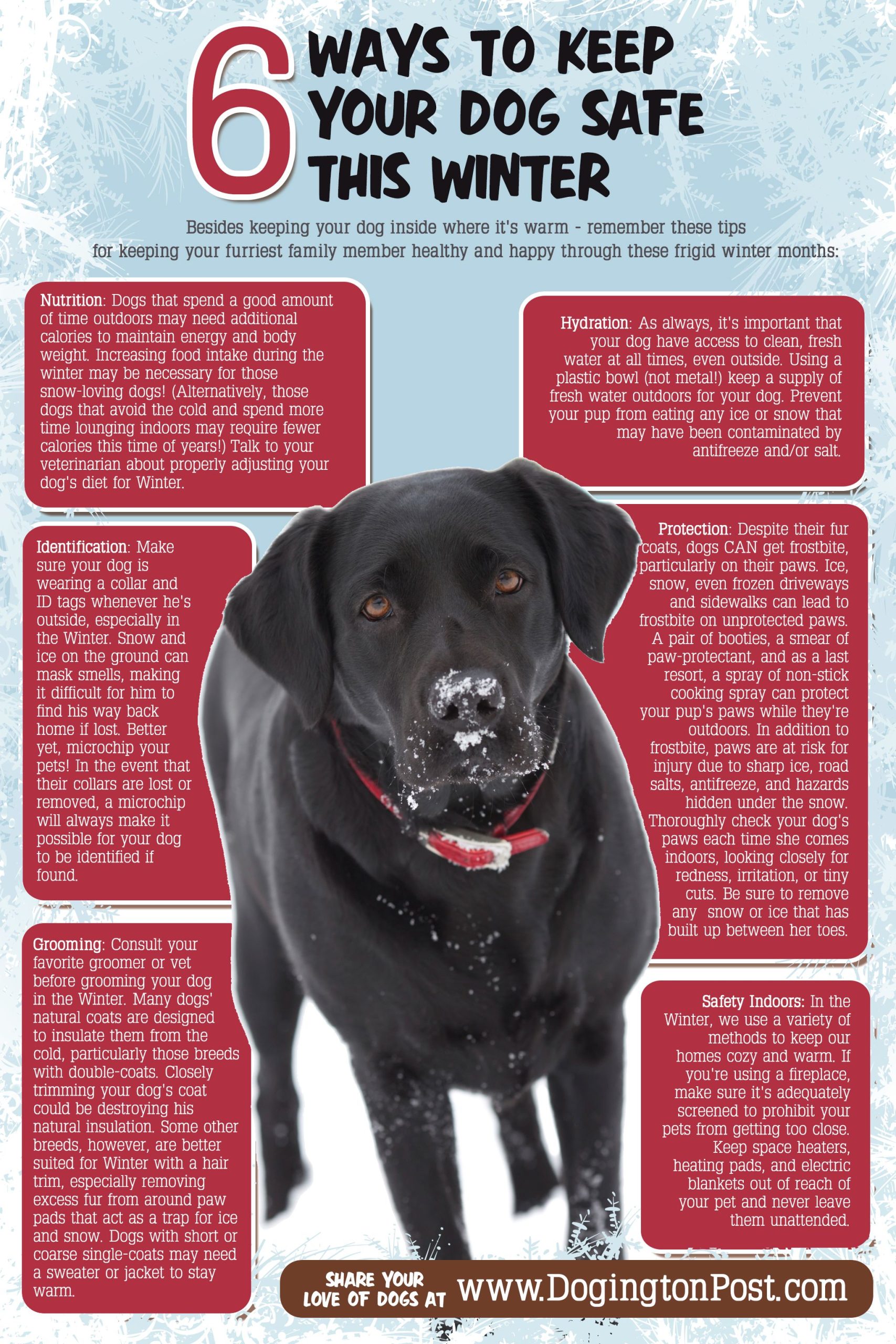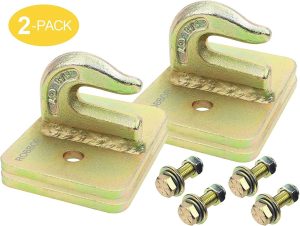Contents
- Understanding The Risks
- Identifying The Signs Of Ingestion
- Preventive Measures To Safeguard Your Dog
- Safe Alternatives To Puppy Pads
- Steps To Take If Your Dog Eats A Puppy Pad
- Training And Behavioral Solutions
- Promoting Overall Wellness For Your Dog
- Creating A Dog-Friendly Environment
- Seeking Professional Advice
- Frequently Asked Questions Of Is It Dangerous For Dogs To Eat Puppy Pads
- Conclusion
Eating puppy pads can be dangerous for dogs due to the risk of intestinal blockage. Puppy pads are not meant to be ingested and can cause serious health issues if swallowed.
Ingesting a puppy pad can lead to choking, vomiting, diarrhea, or even require surgical intervention to remove the blockage. When dogs chew on or swallow pieces of the pad, it can cause a blockage in their digestive system, which can be life-threatening if not treated promptly.
This is especially true for smaller breeds or puppies, as their digestive systems are more delicate and prone to complications. To ensure the safety of your furry friend, it is essential to keep puppy pads and other potentially harmful objects out of their reach. If you suspect that your dog has ingested a puppy pad, it is crucial to seek immediate veterinary assistance. Early intervention can help prevent any potential complications and ensure the well-being of your beloved pet.
Understanding The Risks
Eating puppy pads can pose risks to dogs, including gastrointestinal blockages and toxic reactions to the absorbent chemicals. It’s important to understand these dangers and take precautions to prevent your dog from ingesting them.
Puppy pads are a popular tool in the housebreaking process for our furry friends. However, it is important to understand the potential dangers that can arise if dogs ingest these pads. In this section, we will delve into the health complications that can occur as a result of consuming puppy pads.
Potential Dangers Of Dogs Ingesting Puppy Pads:
- Gastrointestinal blockage: One of the primary risks associated with dogs eating puppy pads is the possibility of gastrointestinal blockage. The material used in these pads is not easily digestible, and if a dog swallows a large piece or several smaller pieces, it can lead to a blockage in their digestive system. This can cause severe discomfort, pain, and even require surgical intervention.
- Toxicity: Some puppy pads are treated with chemicals to attract dogs and make them more effective. While these chemicals are generally safe when used as intended, ingestion of a significant amount of these pads can result in toxicity. Common symptoms of toxicity include vomiting, diarrhea, drooling, and in serious cases, seizures or organ failure.
- Foreign body complications: If a dog gobbles up a puppy pad, it can cause foreign body complications. The pad can get stuck in their throat, esophagus, or intestines, leading to choking or obstruction. These emergencies require immediate veterinary intervention.
Health Complications That Can Arise From Consumption:
- Damage to the digestive system: Ingesting puppy pads can cause abrasions or tears in a dog’s esophagus, stomach, or intestines. This can lead to internal bleeding, infection, and a range of gastrointestinal issues.
- Blockage of the urinary tract: In rare cases, the material from puppy pads can accumulate in a dog’s urinary tract, causing blockages, discomfort, and potential infections. This can be particularly dangerous for male dogs due to their narrow urethra.
- Risk of bacterial infection: If the ingested materials from puppy pads are contaminated with bacteria, it can increase the risk of bacterial infections in a dog’s digestive system. Bacterial infections can cause symptoms such as diarrhea, abdominal pain, and overall sickness.
- Allergic reactions: Some dogs may be sensitive or allergic to the materials used in puppy pads. Ingestion can trigger allergic reactions like itching, swelling, hives, or even anaphylaxis, which requires immediate veterinary attention.
Understanding the risks associated with dogs eating puppy pads is crucial for every pet owner. These potential dangers, including gastrointestinal blockage, toxicity, foreign body complications, damage to the digestive system, urinary tract blockage, bacterial infection, and allergic reactions, highlight the importance of keeping puppy pads out of reach and seeking prompt veterinary care if ingestion occurs.
Remember, prevention is better than dealing with the potential consequences.
Identifying The Signs Of Ingestion
Dogs ingesting puppy pads can pose various dangers. Recognizing signs of ingestion such as vomiting, diarrhea, and abdominal discomfort is crucial for prompt veterinary care.
Dogs are notorious for putting things in their mouth that they shouldn’t. One common item that dog owners may find themselves worrying about is puppy pads. These absorbent pads are designed to aid in housebreaking puppies, but what happens if a dog ingests one?
In this section, we’ll explore the signs that may indicate a dog has eaten a puppy pad and how to determine if immediate veterinary attention is necessary.
Observable Symptoms When Dogs Eat Puppy Pads:
- Vomiting: Dogs may vomit after ingesting a puppy pad. This may be sporadic or persistent, depending on the size and portion of the pad consumed.
- Diarrhea: Digesting the materials in puppy pads can lead to loose stools or diarrhea in dogs.
- Lethargy: If a dog has eaten a puppy pad, they may appear tired, lacking energy, and less interested in regular activities.
- Abdominal pain: Dogs may exhibit signs of discomfort or tenderness in their abdominal area, such as whining or reluctance to be touched.
- Loss of appetite: Ingesting a puppy pad can cause dogs to lose their appetite or show a decreased interest in food.
- Difficulty or painful defecation: The presence of the foreign materials in the puppy pad can cause dogs to experience difficulty or pain during bowel movements.
Identifying these signs can be crucial in ensuring the well-being of your canine companion. However, it’s essential to note that these symptoms can also be associated with other health issues or dietary indiscretions. If you suspect your dog may have ingested a puppy pad, it’s important to assess the severity of the situation and act accordingly.
Red Flags Indicating Immediate Veterinary Attention:
- Persistent vomiting or diarrhea: If your dog continues to vomit or experience diarrhea for an extended period, it’s crucial to seek veterinary attention. This can lead to dehydration and nutrient imbalances.
- Inappetence for more than 24 hours: Dogs typically have a healthy appetite. If your dog has not shown interest in food for more than a day, it could be a sign of a significant issue.
- Severe abdominal pain: If your dog displays intense or worsening abdominal pain, it’s essential to consult with a veterinarian immediately.
- Lethargy or weakness: If your dog appears excessively tired or weak, it could be an indication of a more severe problem.
- Straining or inability to defecate: If your dog is struggling to have a bowel movement or is unable to pass stools, it may necessitate immediate veterinary attention.
Remember, every situation is unique, and only a veterinarian can provide an accurate diagnosis and appropriate treatment for your dog. If you suspect your dog has ingested a puppy pad or is displaying concerning symptoms, it’s always best to consult with a veterinary professional promptly.
Preventive Measures To Safeguard Your Dog
To prevent any potential danger, it is important to keep puppy pads away from dogs. Ingesting them can be harmful, so it’s crucial to take preventive measures to ensure your dog’s safety.
Dogs are curious creatures and it’s important to take preventative measures to ensure their safety, especially when it comes to potential hazards like puppy pads. By following these safe practices and creating a secure environment for your pup, you can minimize the risk of ingestion and keep them out of harm’s way.
Safe Practices To Minimize The Risk Of Ingestion:
- Supervision: Always keep an eye on your dog when they are around puppy pads. Monitoring their behavior can help you intervene before any playful nibbles turn into swallowing accidents.
- Proper disposal: Dispose of used puppy pads promptly and securely. Keep them out of reach from your dog to prevent them from accessing or tearing them apart.
- Alternative potty training methods: Consider using alternative potty training methods, such as crate training or frequent outdoor trips, to reduce the reliance on puppy pads altogether.
- Positive reinforcement: Train your dog using positive reinforcement techniques to discourage them from showing interest in puppy pads. Rewarding good behavior can reinforce their understanding of what is acceptable to chew on.
- Use deterrent sprays: Apply a pet-safe deterrent spray on puppy pads that tastes unpleasant to dogs. This can discourage them from trying to chew or ingest the pads.
How To Create A Secure Environment For Your Pup:
- Designated area: Set up a specific area in your home for puppy pads, ensuring it is inaccessible to your dog when unsupervised.
- Secure confinement: If you need to leave your dog alone, consider using pet gates or crates to confine them to a safe area where they cannot access puppy pads.
- Choose puppy pads wisely: Opt for puppy pads that are durable and resistant to tearing, reducing the risk of ingestion if your pup manages to get their paws on them.
- Regular check-ups: Schedule regular veterinary check-ups for your dog to ensure their overall health and well-being. This can help catch any potential health issues caused by ingesting inappropriate items, including puppy pads.
- Training and socialization: Invest time in training and socializing your dog to prevent them from engaging in destructive behaviors. A well-trained and socialized dog is less likely to chew on or ingest puppy pads.
Remember, prevention is key when it comes to keeping your furry friend safe. By implementing these preventive measures and creating a secure environment, you can significantly reduce the risk of your dog ingesting puppy pads.
Safe Alternatives To Puppy Pads
Puppy pads provide a convenient potty training solution, but are they safe for dogs to eat? Learn about safe alternatives to puppy pads that can prevent potential health hazards for your furry friend.
Potty training a dog can be a challenging task, but it doesn’t necessarily mean you have to rely on traditional puppy pads. There are safer alternatives that are both eco-friendly and dog-safe. In this section, we will explore these alternative potty-training methods and help you find the best option for your furry friend.
Exploring Alternative Potty-Training Methods:
- Grass Potty Pads: These pads mimic the feeling of real grass, providing a more natural and appealing option for dogs. They are often made from eco-friendly materials and can be easily cleaned or replaced.
- Potty-Training Bells: Teach your dog to use a set of bells to indicate when they need to go outside. This method helps them communicate their needs and prevents accidents indoors.
- Dog Litter Boxes: Similar to cat litter boxes, dog litter boxes are designed specifically for indoor use. They contain eco-friendly absorbent materials that control odor and make cleaning a breeze.
- Indoor Dog Toilets: Indoor dog toilets resemble small patches of grass or contain artificial turf. They are easy to clean and maintain, making them a great option for apartment dwellers or those with limited outdoor space.
- Doggie Door installation: If your living situation allows, consider installing a doggie door that leads to a designated potty area in your yard. This gives your dog the freedom to go outside whenever they need to without relying on puppy pads.
Using eco-friendly and dog-safe options not only benefits the environment but also ensures the health and well-being of your furry companion. Remember to monitor your dog’s behavior and choose a potty-training method that suits their needs and preferences. With consistency and positive reinforcement, you can successfully potty train your dog without relying on traditional puppy pads.
Steps To Take If Your Dog Eats A Puppy Pad
If your dog eats a puppy pad, it can be dangerous as it may cause intestinal blockage. Immediate steps should be taken, such as monitoring your pet for any signs of distress, consulting a vet, and preventing access to puppy pads in the future.
Is It Dangerous For Dogs To Eat Puppy Pads
Dogs can be mischievous creatures and sometimes they get their paws on things they shouldn’t. One common concern for dog owners is when their furry friend decides to take a nibble on a puppy pad. While it may seem harmless, there are some potential dangers associated with a dog ingesting a puppy pad.
We will explore the steps you should take if your dog happens to eat a puppy pad to ensure their safety.
Immediate Actions To Ensure Your Dog’S Safety:
- Assess the situation: Take a moment to evaluate the size of the puppy pad your dog ingested and any visible signs of distress your dog may be experiencing.
- Remove any remaining puppy pads: If you have more puppy pads lying around, remove them from your dog’s reach to prevent further ingestion.
- Observe your dog: Keep a close eye on your dog for any immediate symptoms such as vomiting, choking, or difficulty breathing.
Contacting A Veterinarian For Professional Guidance:
- Assess the severity: If your dog shows any signs of distress or discomfort after ingesting a puppy pad, it is crucial to contact your veterinarian immediately for professional advice.
- Provide detailed information: When speaking with your veterinarian, be prepared to share details such as the size of the puppy pad, the time of ingestion, and any visible symptoms your dog is experiencing.
- Follow their recommendations: Your veterinarian may instruct you to monitor your dog’s symptoms closely or bring your pet in for an examination. It is essential to follow their advice to ensure your dog receives the necessary care.
Remember, it’s always better to be safe than sorry when it comes to your dog’s health. If you’re concerned about your dog ingesting a puppy pad, don’t hesitate to reach out to your veterinarian for assistance. They are the experts in handling such situations and will provide the best guidance to keep your furry companion safe and healthy.
Training And Behavioral Solutions
Training and Behavioral Solutions offers expert guidance on common dog behaviors. Learn whether it is safe for your furry friend to consume puppy pads and how to address this issue.
Tips To Discourage Dogs From Chewing On Puppy Pads:
- Provide appropriate chewing alternatives: Make sure your dog has access to safe and durable chew toys that they can redirect their chewing behavior towards. This will help satisfy their natural instinct to chew and keep them away from the puppy pads.
- Regular exercise and mental stimulation: Ensuring that your dog gets enough physical exercise and mental stimulation can be beneficial in preventing destructive behavior. Walks, play sessions, and puzzle toys can help drain your dog’s excess energy and keep them engaged mentally, reducing the likelihood of them turning to chewing on puppy pads.
- Positive reinforcement training: Utilize positive reinforcement techniques to reward your dog for good behavior and discourage unwanted chewing. When your dog shows interest in the chew toys or ignores the puppy pads, praise them and offer treats or verbal cues to reinforce that their actions are desirable.
- Supervision and redirection: Keep a close eye on your dog, especially during the initial stages of training, to prevent them from chewing on the puppy pads. If you notice them approaching the pads, redirect their attention to a more appropriate chewing option and reward them for making the correct choice.
- Consistency and patience: Training takes time and consistency. It’s essential to remain patient and persistent in your efforts to discourage chewing on puppy pads. Consistently reinforce desirable behavior and redirect them away from the pads when necessary. Over time, your dog will learn what is acceptable for chewing and what is not.
Techniques To Redirect Destructive Behavior:
- Crate training: If your dog tends to chew on puppy pads when left alone, crate training can be a valuable technique to prevent destructive behavior. A crate provides a safe and secure space for your dog, reducing the likelihood of them accessing the pads when you’re not around.
- Environmental management: Limit your dog’s access to areas where the puppy pads are located when you cannot supervise them. Use baby gates or closed doors to create physical barriers that prevent your dog from reaching the pads.
- Bitter deterrent sprays: Consider using bitter deterrent sprays that are safe for dogs but have an unpleasant taste. Apply the spray on the puppy pads to discourage your dog from chewing on them. However, always check with your veterinarian before using any products on your dog’s belongings.
- Seek professional help: If your dog’s destructive behavior continues despite your best efforts, it may be beneficial to consult a professional dog trainer or behaviorist. They can assess the underlying reasons for the behavior and provide tailored solutions to address the issue effectively.
- Address underlying anxiety or boredom: Dogs may resort to destructive behavior, such as chewing on puppy pads, due to underlying anxiety or boredom. Engage in activities that help alleviate their anxiety, such as long walks, interactive play, or calming techniques like massage or music therapy. Additionally, consider providing mental stimulation through puzzle toys or food-dispensing toys to keep your dog mentally occupied.
By implementing these tips and techniques, you can effectively discourage your dog from chewing on puppy pads and redirect their destructive behavior towards more appropriate activities. Remember, consistency, patience, and positive reinforcement are key to successful training outcomes.
Promoting Overall Wellness For Your Dog
Keep your dog’s overall wellness in mind and avoid letting them eat puppy pads. Consuming these pads can be dangerous for dogs and may lead to digestive issues and blockages. Take extra care to ensure your furry friend stays healthy.
Keeping your canine companion healthy and happy should be a top priority for every pet parent. A crucial aspect of promoting overall wellness for your dog is maintaining a balanced diet and providing regular exercise. By focusing on these key factors, you can ensure that your furry friend is in optimal health both physically and mentally.
Importance Of A Balanced Diet
A nutritious and well-rounded diet is essential for your dog’s overall well-being. Here are some key points to consider:
- Provide a balanced and complete diet: Ensure that your dog’s meals contain the right combination of proteins, carbohydrates, fats, vitamins, and minerals to meet their nutritional needs.
- High-quality dog food: Opt for reputable brands that use premium ingredients and avoid artificial additives. Look for the AAFCO (Association of American Feed Control Officials) statement on the packaging to ensure the food meets the minimum requirements.
- Portion control: Feeding your dog the appropriate amount of food is crucial to maintaining a healthy weight. Avoid overfeeding, as excess weight can lead to a range of health issues such as joint problems and obesity.
- Dietary considerations: Depending on your dog’s age, breed, and any specific health conditions they may have, consult with your veterinarian to determine if any dietary modifications are necessary.
Regular Exercise For A Happy Pup
In addition to a balanced diet, regular exercise is vital for your dog’s physical and mental well-being. Consider the following strategies:
- Daily walks: Take your dog for walks to keep them active and provide mental stimulation. Regular exercise helps maintain a healthy weight, improves cardiovascular health, and strengthens muscles.
- Engage in playtime: Make time for interactive play sessions such as fetch or tug-of-war. These activities not only provide physical exercise but also promote bonding between you and your furry friend.
- Mental stimulation: Keep your dog’s mind sharp by incorporating puzzle toys, obedience training, and interactive games into their routine. Mental stimulation is just as important as physical exercise.
- Consider your dog’s breed and activity level: Different breeds have varying exercise requirements. Consult breed-specific resources or consult with your veterinarian to determine the ideal exercise regimen for your furry friend.
By focusing on a balanced diet and regular exercise, you can promote overall wellness for your dog. Remember to consult with your veterinarian to ensure you are meeting your pet’s specific needs. With proper care and attention, you can keep your furry friend healthy, happy, and thriving.
Creating A Dog-Friendly Environment
Dog owners should be cautious as eating puppy pads can be dangerous for dogs. Creating a dog-friendly environment means keeping these potentially harmful items out of their reach to ensure their health and safety.
Dogs are curious creatures who explore the world around them with their noses and mouths. As pet owners, it’s our responsibility to ensure their safety by creating a dog-friendly environment. By taking a few simple steps, you can design spaces that encourage safe habits and minimize the risk of accidents or ingestion of harmful objects or substances.
Here’s how you can create a dog-friendly environment:
Designing Spaces That Encourage Safe Habits:
- Secure the Home: Make sure your home is a secure and safe place for your furry friend. Check for any escape routes and reinforce any weak spots in fences or gates.
- Provide Ample Play Areas: Dogs need space to play and burn off their energy. Designate an area in your home or yard specifically for this purpose. Consider using dog-friendly flooring like artificial grass or rubber flooring to minimize the risk of slipping or injury.
- Create a Cozy Retreat: It’s important to provide your dog with a comfortable and safe space where they can relax and unwind. Set up a cozy dog bed or crate in a quiet corner of your home where they can retreat to when they need some alone time.
- Establish a Feeding Area: Designate a specific spot for your dog’s meals. This will not only help with training but also prevent them from accessing human food or knocking over their bowls.
Removing Hazardous Objects And Substances:
- Keep Cleaning Supplies out of Reach: Store all cleaning supplies, including chemicals and detergents, in cabinets or high shelves where your dog cannot access them. Even seemingly harmless household items like dish soap or bathroom cleaner can be toxic if ingested.
- Secure Trash Bins: Dogs are notorious for getting into the trash, which can be dangerous if they ingest spoiled food, plastic, or other harmful objects. Invest in dog-proof trash bins or keep them in a secure location.
- Avoid Toxic Plants: Certain plants can be toxic to dogs if ingested. Research which plants are safe and avoid having any toxic ones in your home or yard. Consider using pet-friendly alternatives like spider plants or Boston ferns.
- Manage Medications: Keep all medications, both prescription and over-the-counter, in a secure location out of your dog’s reach. Dogs can easily chew through pill bottles and accidentally ingest medications that could be harmful to them.
Creating a dog-friendly environment is essential for the well-being and safety of your furry friend. By designing spaces that encourage safe habits and removing hazardous objects or substances, you can minimize the risk of accidents or ingestion of harmful items.
Remember, it’s always better to be proactive and prevent potential dangers than to react to an emergency situation.
Seeking Professional Advice
Eating puppy pads can be dangerous for dogs. It is essential to seek professional advice to ensure your furry friend’s health and well-being.
Dogs are curious creatures and may sometimes get into things they shouldn’t. If you’ve found yourself googling, “Is it dangerous for dogs to eat puppy pads? ” Then rest assured, you’re not alone. Puppy pads are primarily used for potty training, but can they pose a risk if ingested by your furry friend?
Seeking professional advice is crucial in these situations to ensure the well-being of your pet. Whether it’s consulting with a veterinarian or getting expert tips on dog training and proper care, professional guidance is key. Let’s explore these options further.
Consulting With A Veterinarian For Personalized Guidance:
- Veterinarians are experts in animal health and can provide tailored advice based on your dog’s specific circumstances.
- By seeking professional guidance, you can get accurate information regarding the potential dangers associated with ingesting puppy pads.
- Vets can assess any possible symptoms or risks your dog may face and recommend appropriate actions or treatments.
- They may conduct examinations or tests to rule out any underlying health issues and provide a comprehensive evaluation of your dog’s condition.
Expert Tips On Dog Training And Proper Care:
- Training your dog to avoid eating puppy pads is crucial for their safety. Here are some expert tips to consider:
- Consistently supervise your dog during potty training to discourage any chewing or eating of puppy pads.
- Reward and reinforce positive behavior when your dog properly uses their designated potty area.
- Utilize alternative potty training methods, such as crate training or consistent outdoor walks, to minimize the use of puppy pads.
- Consider using deterrent sprays or scents on puppy pads to discourage your dog from chewing or ingesting them.
- Properly dispose of used puppy pads to prevent access by your dog and reduce the risk of ingestion.
Remember, while seeking professional advice is essential, prevention is always better than cure. Taking proactive measures to avoid situations where your dog can access puppy pads will minimize the risks involved. Above all, ensuring a safe and healthy environment for your beloved pet should be your top priority.

Credit: www.amazon.com
Frequently Asked Questions Of Is It Dangerous For Dogs To Eat Puppy Pads
Why Is My Dog Eating The Pee Pad?
Your dog may be eating the pee pad due to several reasons. Dogs may chew on pee pads out of boredom, hunger, or anxiety. Ensure your dog is receiving sufficient mental and physical stimulation. Additionally, establish a consistent feeding schedule to prevent your dog from seeking alternative food sources.
Eating the pee pad could also be a sign of a nutrient deficiency, so consult your veterinarian to ensure your dog’s dietary needs are being met. Furthermore, some dogs may find the texture and smell of the pee pad appealing, leading them to chew on it.
In such cases, consider using different types of pee pads or alternative potty training methods. Remember, consistent training and positive reinforcement are vital in redirecting your dog’s behavior.
Are Puppy Pads Toxic If Ingested?
Puppy pads are not toxic if ingested. They are designed to be safe for puppies. However, it’s important to note that ingesting large amounts of the pads can cause gastrointestinal blockages, which may require medical attention. It’s best to keep puppy pads out of reach to prevent any potential accidents.
If you suspect your puppy has ingested a puppy pad or is showing signs of discomfort, consult a veterinarian for advice.
How Do I Get My Dog To Stop Eating Puppy Pads?
To stop your dog from eating puppy pads, try these steps: 1. Supervise: Keep a close eye on your dog and prevent access to the pads whenever possible. 2. Redirect: Offer alternative chewing options like chew toys or bones to redirect their attention.
3. Consistency: Establish a consistent daily routine for feeding, potty breaks, and exercise to reduce anxiety. 4. Positive reinforcement: Praise and reward your dog with treats when they use the designated potty area instead of the pads. 5. Gradual transition: Slowly decrease the size of the pad area over time, encouraging your dog to use the designated area instead.
6. Clean thoroughly: Remove any scent from the pads to discourage your dog from being attracted to them. 7. Consult a veterinarian: If the behavior doesn’t improve, seek advice from a professional to rule out any underlying medical issues. By following these tips, you can help train your dog to stop eating puppy pads and promote good potty habits.
What Happens If A Dog Eats A Pad?
If a dog eats a pad, it can cause an intestinal blockage. This is a serious issue that requires immediate veterinary attention. Signs of a blockage may include vomiting, diarrhea, loss of appetite, abdominal pain, and difficulty passing stool. In some cases, surgery may be necessary to remove the pad and alleviate the blockage.
To prevent this, it’s important to keep pads and other small objects out of your dog’s reach. If you suspect your dog has ingested a pad, contact your veterinarian right away for proper guidance and treatment.
Conclusion
Overall, it is important to keep a close eye on our furry friends and ensure they do not ingest puppy pads. While some may think it’s harmless, the truth is that puppy pads can pose several dangers to dogs. Firstly, the ingestion of the materials used in the pads can lead to gastrointestinal blockages, requiring surgery to remove.
Secondly, the chemicals present in the pads, such as the absorbent polymers, can be toxic if ingested. Additionally, the risk of choking or suffocating on the pad is a significant concern. To prevent any potential harm, it is essential to properly supervise our dogs, securely dispose of used puppy pads, and provide them with safe chew toys and appropriate training.
By taking these precautions, we can ensure the health and wellbeing of our beloved pets.











